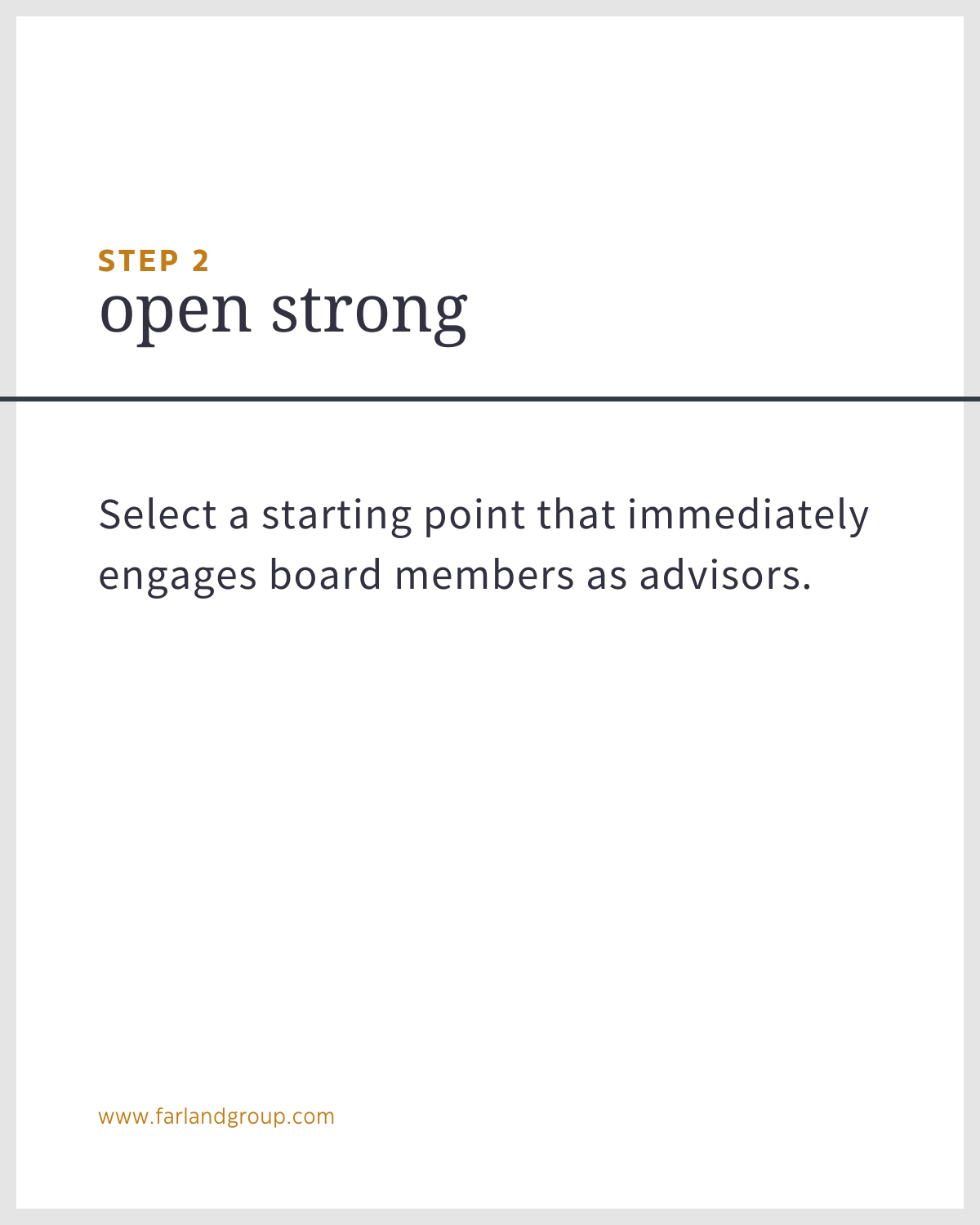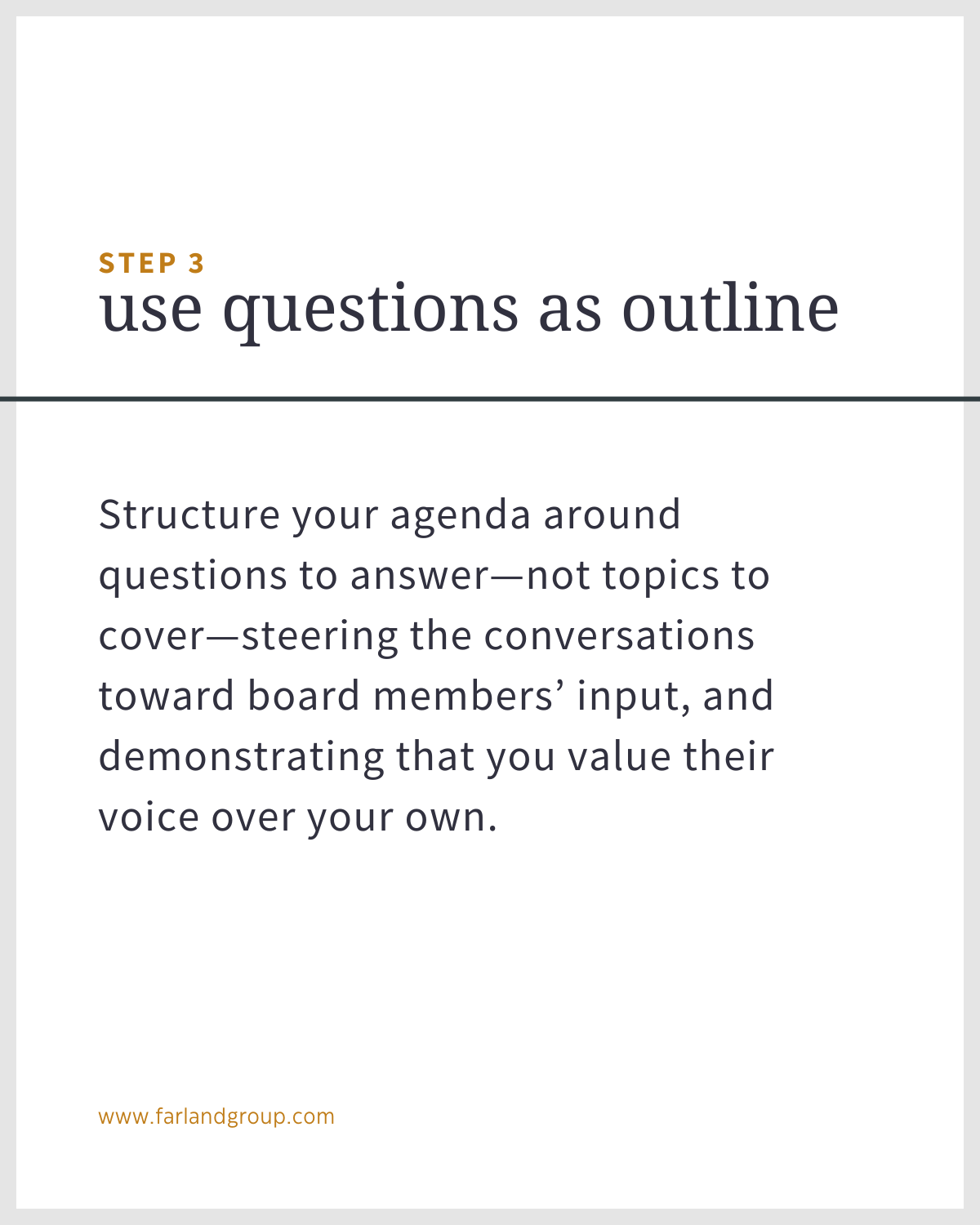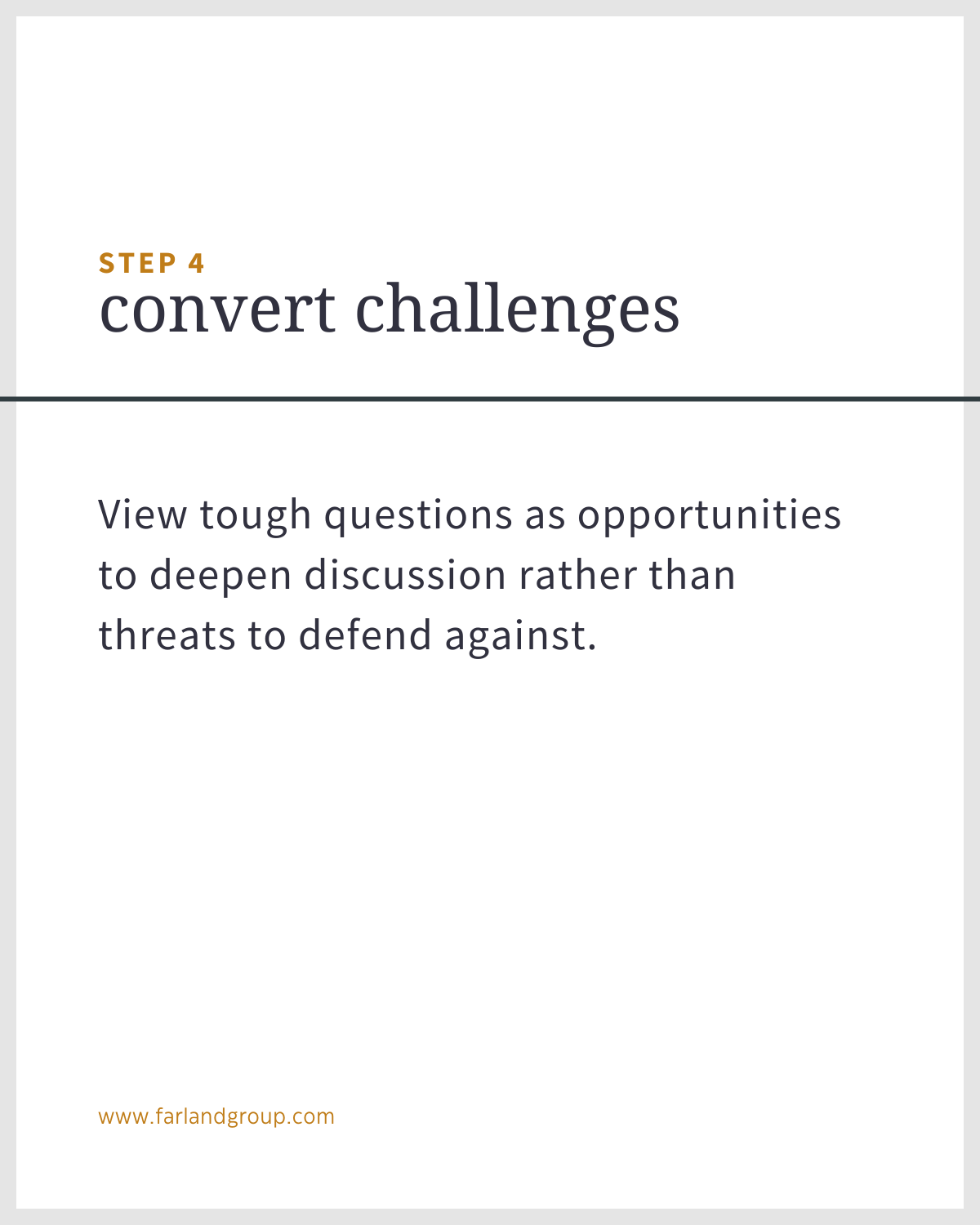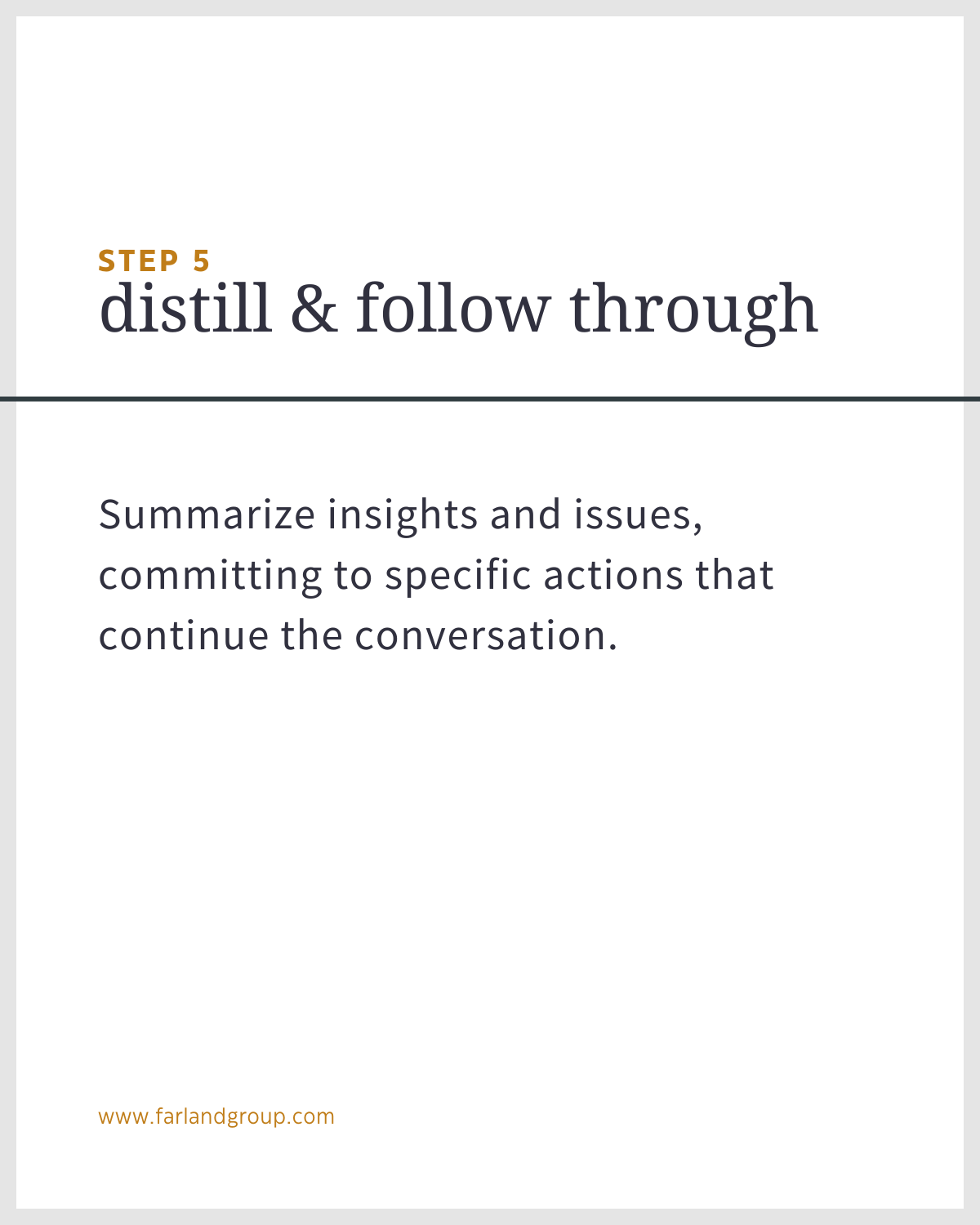6 Powerful Ways to Open Your Next Advisory Board Discussion
In our previous post, "Stop Selling, Start Seeking: The Executive's Guide to Advisory Board Discussions," we introduced a 5-step framework for transforming customer advisory board presentations into meaningful discussions.
We explored Step 1 in depth, covering how to develop your purpose, questions, and talking points.
Now, let's dive into Step 2: choosing a strategic opening that immediately engages your board and sets the tone for productive conversations.
Why Your Opening Matters
The first minutes of your advisory board session are critical. They signal to members whether this will be a traditional presentation (where they sit back passively) or a genuine discussion (where their active participation is not just welcome but essential).
A strong opening helps orient your advisors, as well as avoid a classic mistake: starting with a rambling lecture of too much context, often based on an existing slide deck.
There are many ways to start well, if you accomplish three things:
Clearly frame the business challenge or opportunity
Establish your desire for input
Explicitly define the role you want board members to play
Here are six opening options, each with examples and guidance. Use them to brainstorm and craft an opening that will work for you. (And stay tuned for more options in a future post.)


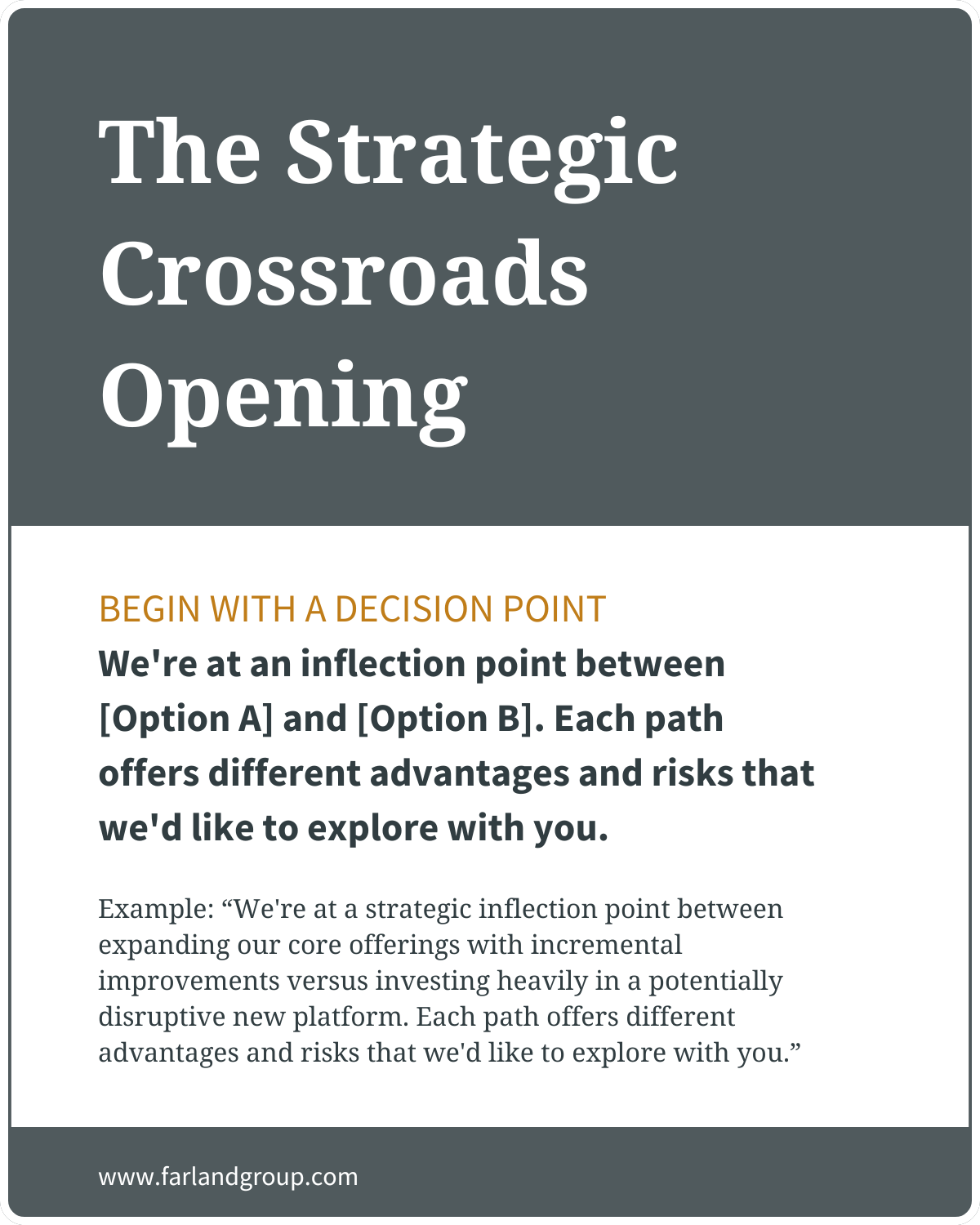


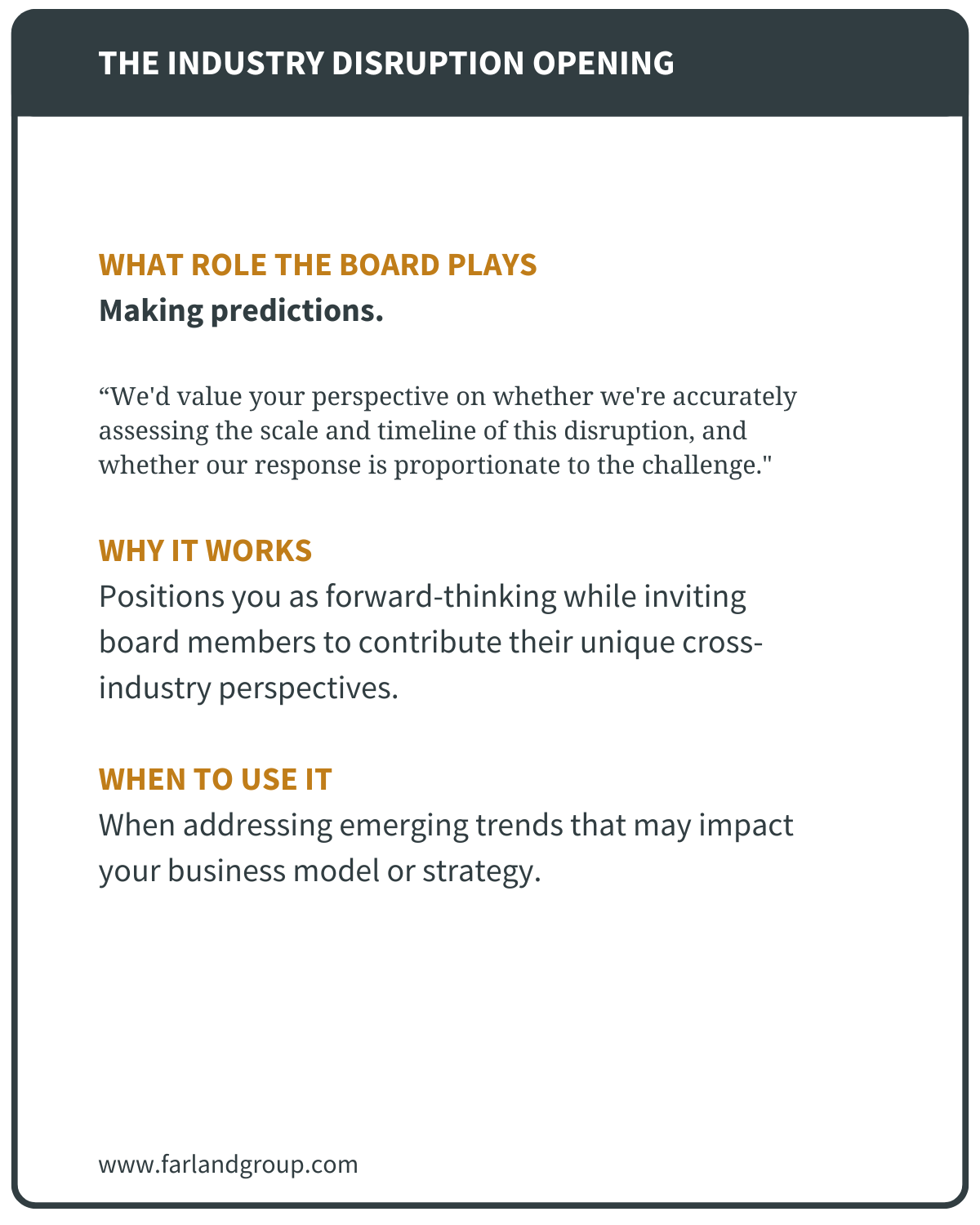
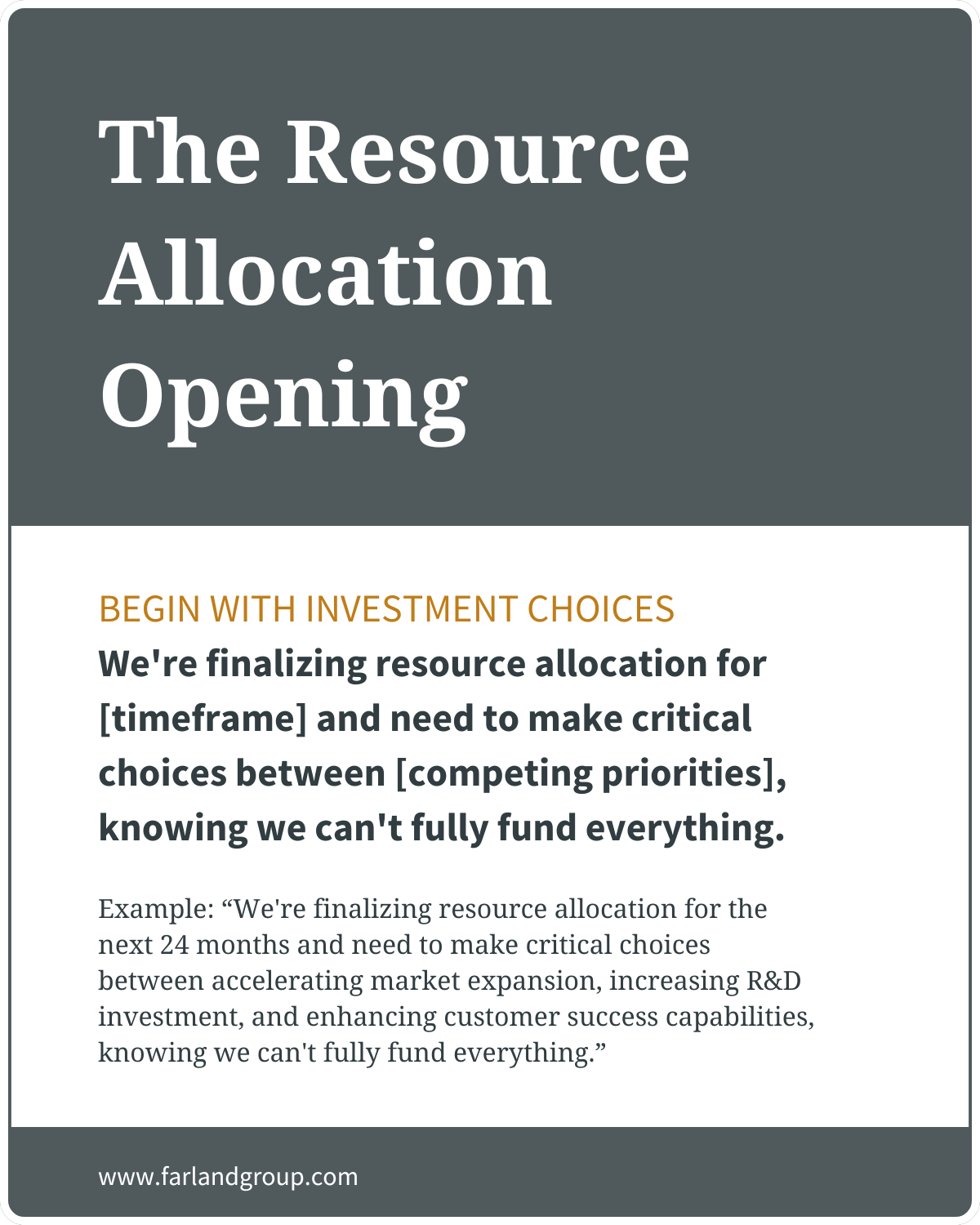
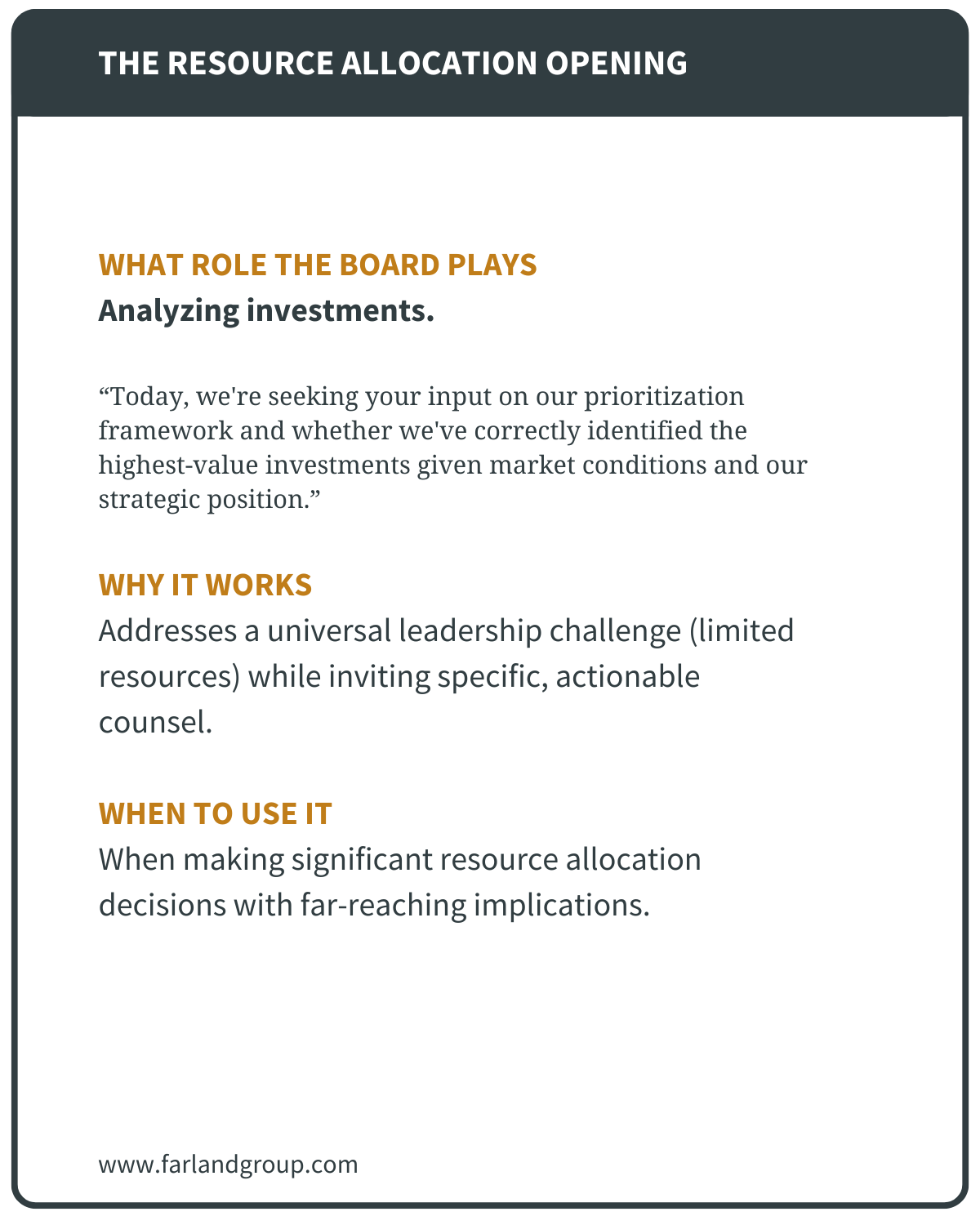
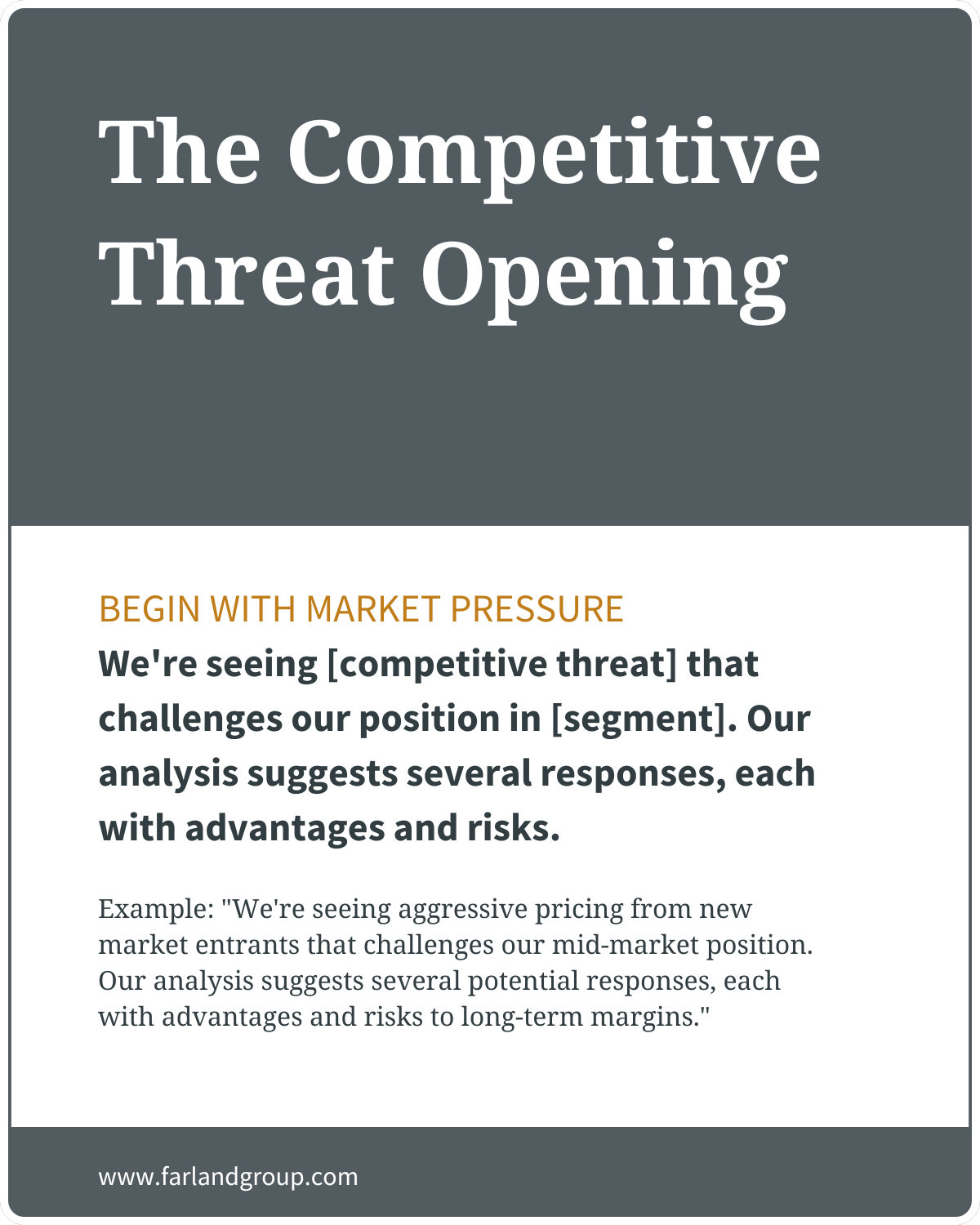
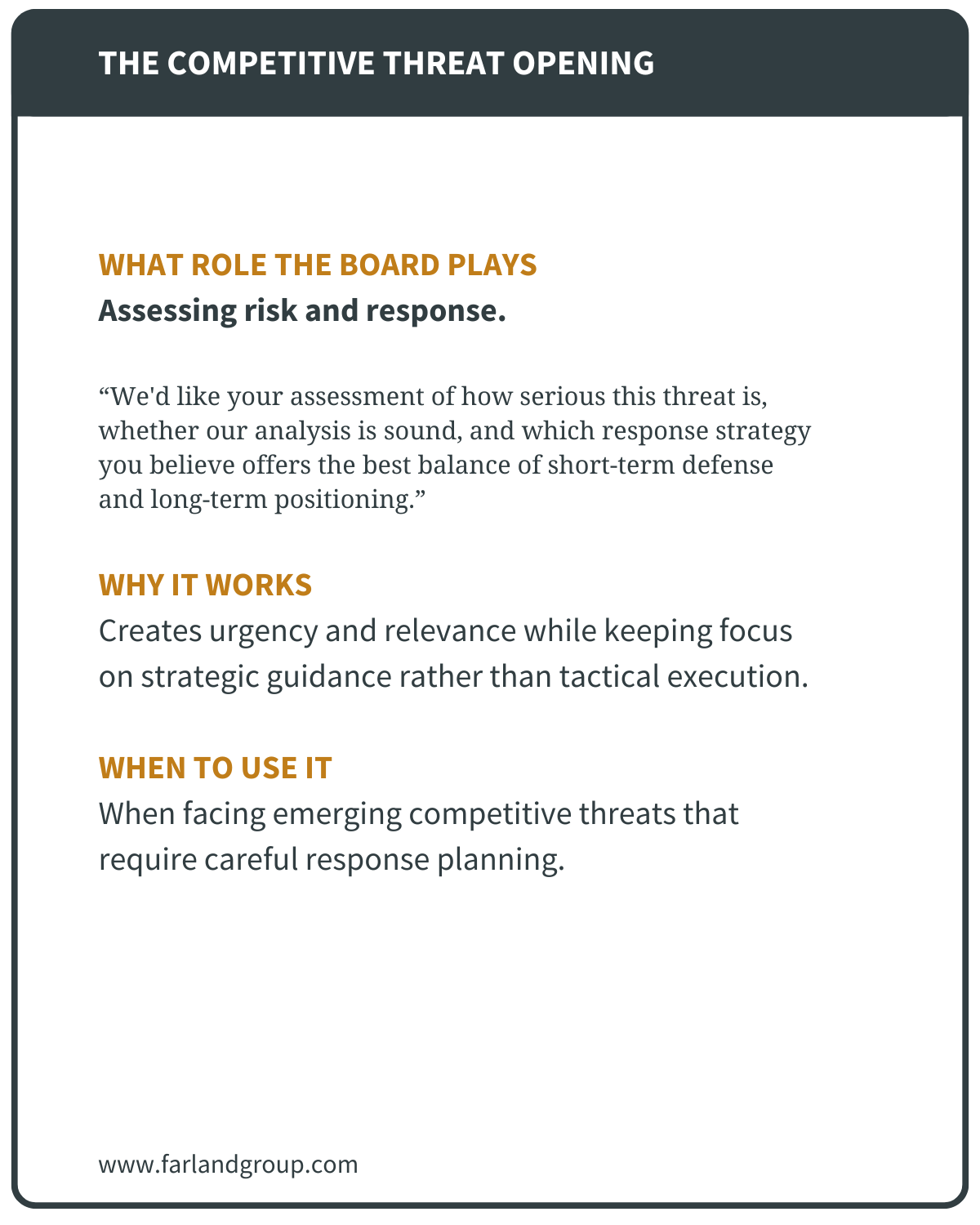
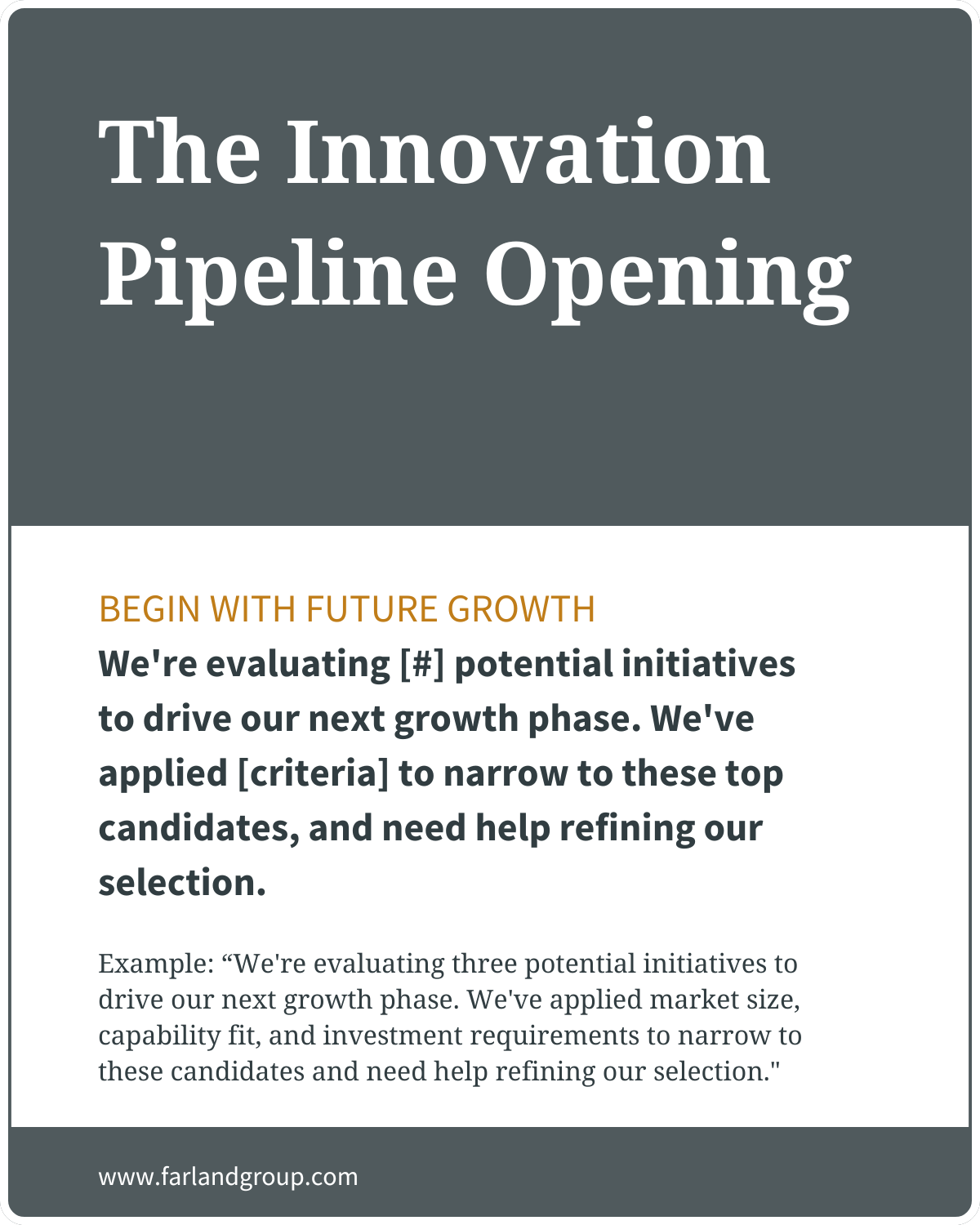

Selecting the Right Opening Strategy
The best opening aligns with your specific business challenge. It will be the one that helps you to introduce the issue clearly and simply, explore it with candid transparency, and offer explicit examples of your current thinking.
Transparency: These are your top customers so small t transparency is in order. “We believe we have a market opportunity we aren’t addressing, and we want your help in validating and challenging our assumptions.”
Clarity: Do not muddy the waters in your opening. Be clear, crisp and concise. “If we do X, we know Y will happen. Do you believe we are correct?”
Simplicity: This is not the time to wheel out your PhD thesis. Simply state the problem to solve, and then provide simple options. Even if the content is quantum computing, given the time you have, your ask of your advisory board should be straightforward.
Looking ahead: From opening to ongoing engagement
Your opening sets the stage, but you’ll also want to maintain the energy and engagement, even if (when!) you’re thrown a curve-ball. In Step 3, you'll use the questions and talking points from Step 1 to structure your session.
By mastering all five steps of our framework, you'll transform your advisory board from a passive audience into active partners.

